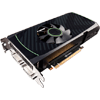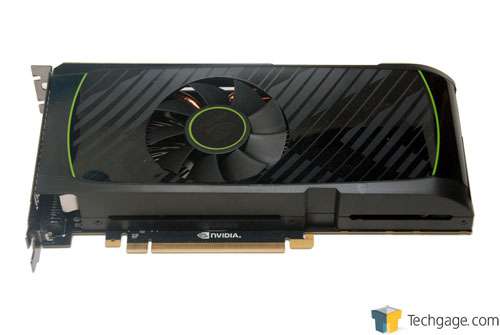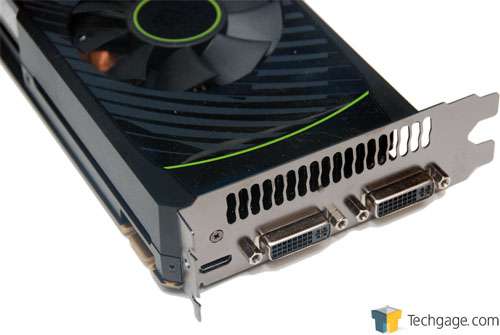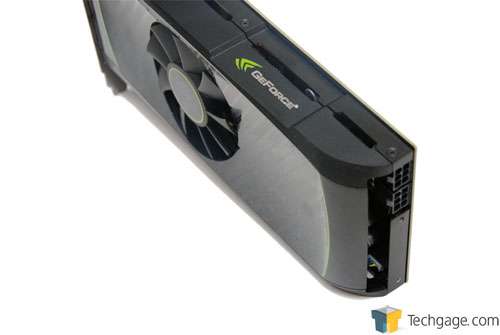- Qualcomm Launches Snapdragon 4 Gen 2 Mobile Platform
- AMD Launches Ryzen PRO 7000 Series Mobile & Desktop Platform
- Intel Launches Sleek Single-Slot Arc Pro A60 Workstation Graphics Card
- NVIDIA Announces Latest Ada Lovelace Additions: GeForce RTX 4060 Ti & RTX 4060
- Maxon Redshift With AMD Radeon GPU Rendering Support Now Available
NVIDIA GeForce GTX 560 Ti – Titanium is Back

After being hidden for the past eight years, NVIDIA has brought back the “Ti” name for its GeForce GTX 560 Ti. The GeForce4 Ti 4200, introduced in 2002, was a card that offered both great pricing and superb performance. NVIDIA looks to recreate the same sort of excitement with its GTX 560 Ti, but has it succeeded?
Page 1 – Introduction
In continuing its rollout of the GeForce GTX 500 series, NVIDIA has just unleashed its GTX 560 Ti, a mid-range graphics card targeting those looking for superb gaming performance but don’t care to take a hammer to their piggy bank.
At $249.99 USD, NVIDIA’s latest card competes directly with AMD’s brand-new Radeon HD 6950 1GB, and it’s our hope that after we’re through with this review, we’ll have a better understanding of which competitor comes out ahead at around the ~$250 mark.
When NVIDIA first contacted us about the GTX 560 Ti, I was hit with nostalgia immediately. At around the same time I was beginning to take PC hardware a little more seriously, I purchased a GeForce4 Ti 4200… an under-$200 card that at the time just screamed. I had a ton of fun with that card, and certainly got my money’s worth. Once the GeForce 5 series came to be, though, the “Ti” name was shelved and never to be seen again.
Of course, that is until now. Why exactly did NVIDIA revive this eight-year-old gem? In talking to the company about it, it seemed like there was no strong reason at all… it was just something to do. Plus, it looks good in marketing. “Ti” stands for “Titanium”, and as a metal that’s lighter than steel but just as strong, NVIDIA pushes the GTX 560 Ti as a card that packs a massive punch but in a modest physical package.
Closer Look
An interesting thing to mention about the GTX 560 Ti right off the bat is that this is not a replacement for the GTX 460. Strange, right? Well, it’s true, and as the price-points of both are quite far apart (~$70), it does tend to make sense. We’ll see how much sense after our performance benchmarks.
NVIDIA’s current line-up looks like this:
|
Model
|
Core MHz
|
Shader MHz
|
Mem MHz
|
Memory
|
Bus Width
|
Cores
|
| GeForce GTX 580 |
772
|
1544
|
4008
|
1536MB
|
384-bit
|
512
|
| GeForce GTX 570 |
732
|
1464
|
3800
|
1280MB
|
320-bit
|
480
|
| GeForce GTX 560 Ti |
822
|
1645
|
4008
|
1024MB
|
256-bit
|
384
|
| GeForce GTX 465 |
607
|
1215
|
3206
|
1024MB
|
256-bit
|
352
|
| GeForce GTX 460 |
675
675 |
1350
1350 |
3600
3600 |
768MB
1024MB |
192-bit
256-bit |
336
336 |
| GeForce GTS 450 |
783
|
1566
|
3608
|
1024MB
|
128-bit
|
192
|
Compared to NVIDIA’s recently-launched GeForce GTX 570, the GTX 560 Ti is scaled down in numerous ways, such as by having a smaller number of cores, and a tighter memory bus width, but at the same time, the core speed has been bumped up, and overall, this should prove to be an interesting specimen.
The cooler on the GTX 560 Ti looks quite similar to the GTS 450 launched this past September, and overall it’s not a bad thing. The fan is still strangly protruding through the top of the open space, but that’s not an issue unless you for some reason enjoy rubbing the exterior of your graphics card while while gaming.
Like the other GTX 500 cards, this one features a mini-HDMI port along with dual DVI ports. For those interested in using more than two monitors for playing multi-monitor games or using NVIDIA 3D Surround, you’ll need to purchase a second GTX 560 Ti.
The rated TDP for the card is 170W, and NVIDIA recommends using a power supply rated at 500W or higher. Simple math will tell you that a 700W+ PSU would be suitable for two of these cards in SLI.
NVIDIA’s latest card looks interesting from both a specs and pricing perspective, and given that it features the Ti moniker that was once known for affordable excellency, this should be fun to benchmark. Let’s get on with it!
Support our efforts! With ad revenue at an all-time low for written websites, we're relying more than ever on reader support to help us continue putting so much effort into this type of content. You can support us by becoming a Patron, or by using our Amazon shopping affiliate links listed through our articles. Thanks for your support!








